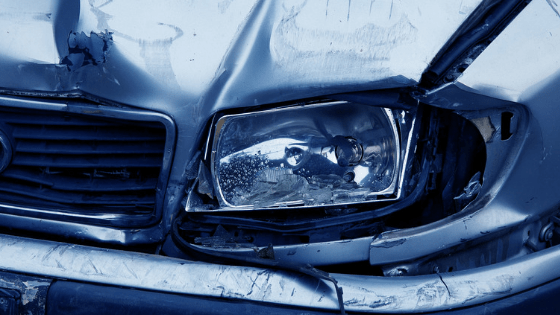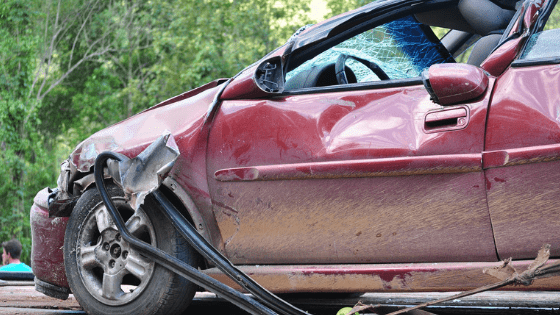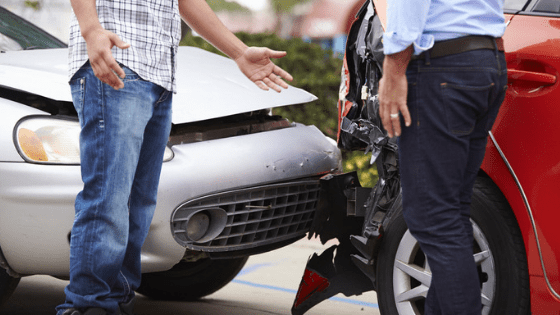Only a handful of states in the U.S. legally allow you to drive without car insurance. Getting behind the wheel without coverage puts you at risk for serious penalties, especially if you’re involved in an accident.

No-Fault State or Tort State?
The level of risk and responsibility associated with a collision differs depending on the state in which you live. Currently, there are 12 states with no-fault insurance laws:
- Florida
- Hawaii
- Kansas
- Kentucky
- Massachusetts
- Michigan
- Minnesota
- New Jersey
- New York
- North Dakota
- Pennsylvania
- Utah
Each state has its own requirements under the no-fault system, but all provide some level of protection against being sued by the other party in an accident. No-fault laws require a driver’s own insurance company to pay up to a certain amount. Because of this guarantee, restrictions are placed on taking legal action.
Even without insurance, you’re likely safe from being sued in a no-fault state unless the other driver suffers serious injuries or their medical expenses exceed an amount set by the state. However, should the other driver sue you for damages, you’re responsible for handling the cost of the settlement.
In tort states, the driver responsible for the accident is expected to cover the other driver’s medical bills, loss of wages and pain and suffering compensation. Insurance companies usually handle these expenses, but if you’re uninsured, you’ll have to pay out of pocket.
What Should You Do After an Accident?
Whatever your reason for being uninsured, an accident can be far more expensive than paying for a policy. If you get in an accident while without car insurance, take these steps to minimize the damage and your risk.
Step #1: Don’t Panic
The immediate aftermath of an accident isn’t the time to be worrying about your lack of insurance. You need to keep a level head in order to handle the situation properly and be sure you get all the necessary information before addressing the problem of what to do later.
Step #2: Get Help
Regardless of who is at fault in an accident, both drivers and any passengers need to be checked for injuries. Assess your own physical state, and check on the occupants of the other car. Call 911 if necessary, and get the police on the scene if:
- Serious property damage has occurred
- Someone has suffered severe injuries
- Someone has died
Allow emergency personnel to examine you, or visit your doctor as soon as possible after the accident.

Step #3: Exchange Information
If both you and the other driver are conscious and able to communicate, exchange names and contact information. You should also get the license plate number; the vehicle’s make, model and color; the year of the car; and the car’s VIN. Give the other driver the same information about your car, and be honest about your insurance situation. Lying about not having coverage doesn’t benefit you in any way and will only make the situation worse.
It may be helpful to get statements from anyone who witnessed the accident in case you’re brought to court and need additional information about and corroboration of the events.
Step #4: Document the Evidence
Capture the details of the accident for your records and to have on hand should a legal dispute arise. Take photos of all damage to your vehicle and any injuries you suffered. Don’t wait until days after the accident or until your doctor has examined you. It’s important to have a record of the severity of your injuries at the time they occurred. If adverse weather was involved, take photos to confirm the conditions.
Get a copy of the police report as soon as you can. Law enforcement may record details you didn’t see or wouldn’t have thought to take note of, and this information can be helpful when settling disputes about the accident.
Step #5: Plan to Handle the Costs
Should the other driver decide to seek compensation, you’ll need to come up with a way to pay the full amount of the damages. Get all the information about what you owe and the deadline for payment. Talk with a lawyer or financial advisor about your options. You may be able to set up a payment plan or have a portion of the money taken out of your paycheck each week until the amount is paid in full. You also have the option of obtaining a loan, but this should only be done as a last resort.
What If the Other Driver is At Fault?
Not being the one responsible in a car accident may not mean much if your state has a “no pay, no play” policy in place. Eleven states have some form of this law, which limits the amount of compensation an uninsured driver can receive:
- Alaska
- California
- Indiana
- Iowa
- Kansas
- Louisiana
- Michigan
- Missouri
- New Jersey
- North Dakota
- Oregon

“No pay, no play” laws generally prohibit you from recovering non-economic damages, such as pain and suffering. The other driver may still have to cover your medical bills and any property damage you suffer. However, some states require you to pay a large deductible before allowing you to sue the at-fault party.
If you don’t have car insurance, don’t assume you’re fine because you’ve never had an accident. Nobody expects to be involved in a collision, and you and the other driver are better off if you’re both covered by comprehensive policies. In many states, going without insurance can lead to the suspension or revocation of your license, criminal charges or hefty fines. You may even risk jail time for failing to carry a policy.
To find a reliable insurance provider, research your options. Get recommendations from family and friends, compare prices and put together the most detailed coverage you can afford. Having an insurance agent on your side protects you from the penalties associated with being uninsured and guarantees you’ll have the help you need in the event of an accident.
About the Author
Scott Distasio is the founder of Distasio Law Firm in Tampa. His career focus is on all types of personal injury cases. His work represents his belief that all firms should provide outstanding service to their clients. Follow @scottdistasio on Twitter to see what legal wisdom he shares next.
 Kaboutjie SA Mommy Blogs by Lynne Huysamen
Kaboutjie SA Mommy Blogs by Lynne Huysamen




